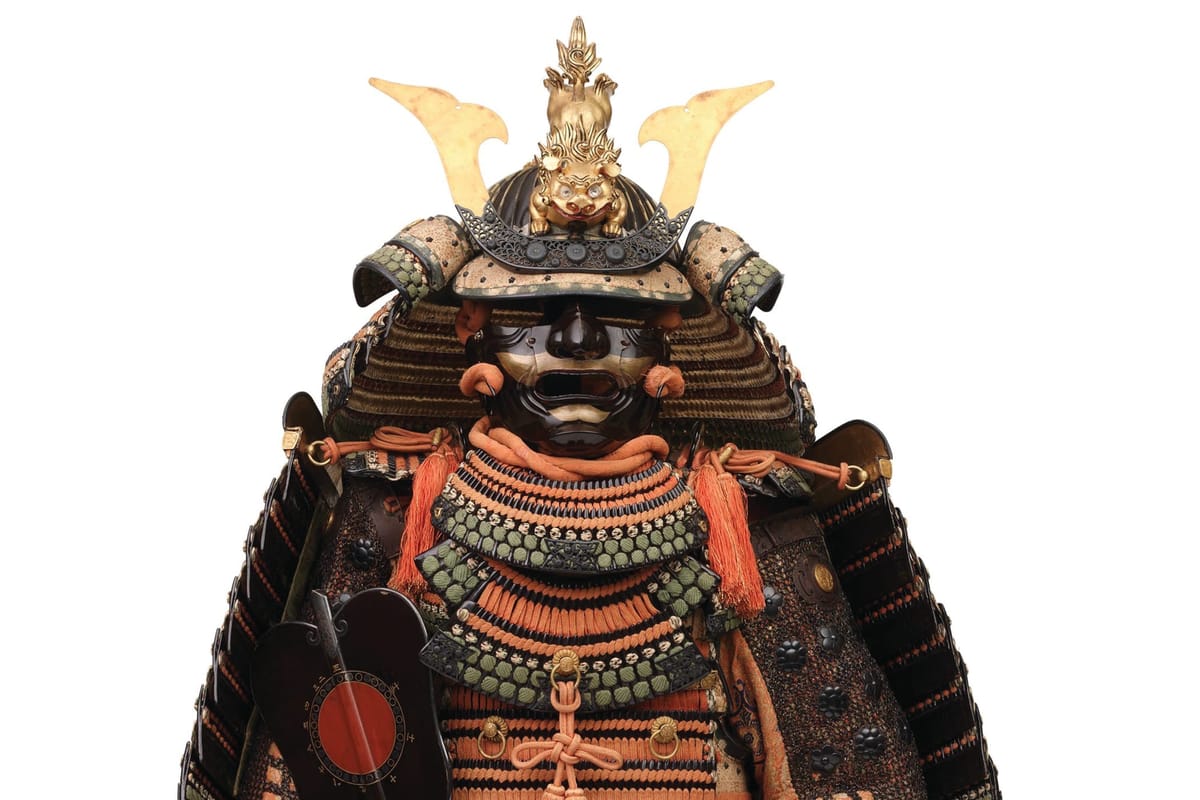
What do the samurai — the honorable and fearless legendary warriors of Japan — have to do with Oklahoma? More than you may think.
The internationally recognized traveling exhibit SAMURAI: Armor from the Collection of Ann and Gabriel Barbier-Mueller is now open at the Philbrook Museum of Art in Tulsa. This exhibit, showcasing nearly 80 samurai artifacts from over nine centuries of Japanese history, will be at the Philbrook until Aug. 3.
But what was it about SAMURAI that captivated the museum team enough to bring it to Tulsa? According to Kalyn Fay Barnoski, curator of the exhibit, Philbrook is exhibiting SAMURAI as part of a community request — which is, incidentally, in keeping with the literal definition of the word samurai as “one who serves.”
“People really like things that aren’t part of their everyday and they don’t have a deep understanding of. So there’s a fascination aspect to it,” hypothesizes Barnoski on why the samurai have such widespread interest.
Interest in samurai has caused the exhibit to travel the world, being shown at institutions such as the musée du quai Branly–Jacques Chirac in Paris; Musée de la civilisation in Québec City; the Museum of Fine Arts in Boston; the Portland Art Museum in Portland, Oregon; the Kimbell Art Museum in Fort Worth; the Los Angeles County Museum of Art, Los Angeles (LACMA); Centro Cultural La Moneda, Santiago, Chile; the Denver Art Museum; La Biennale Paris in the French capital; and Kunsthalle München in Munich, Germany, with the most recent stop being the Virginia Museum of Fine Arts in 2024.
Now, in 2025, Philbrook joins this list.
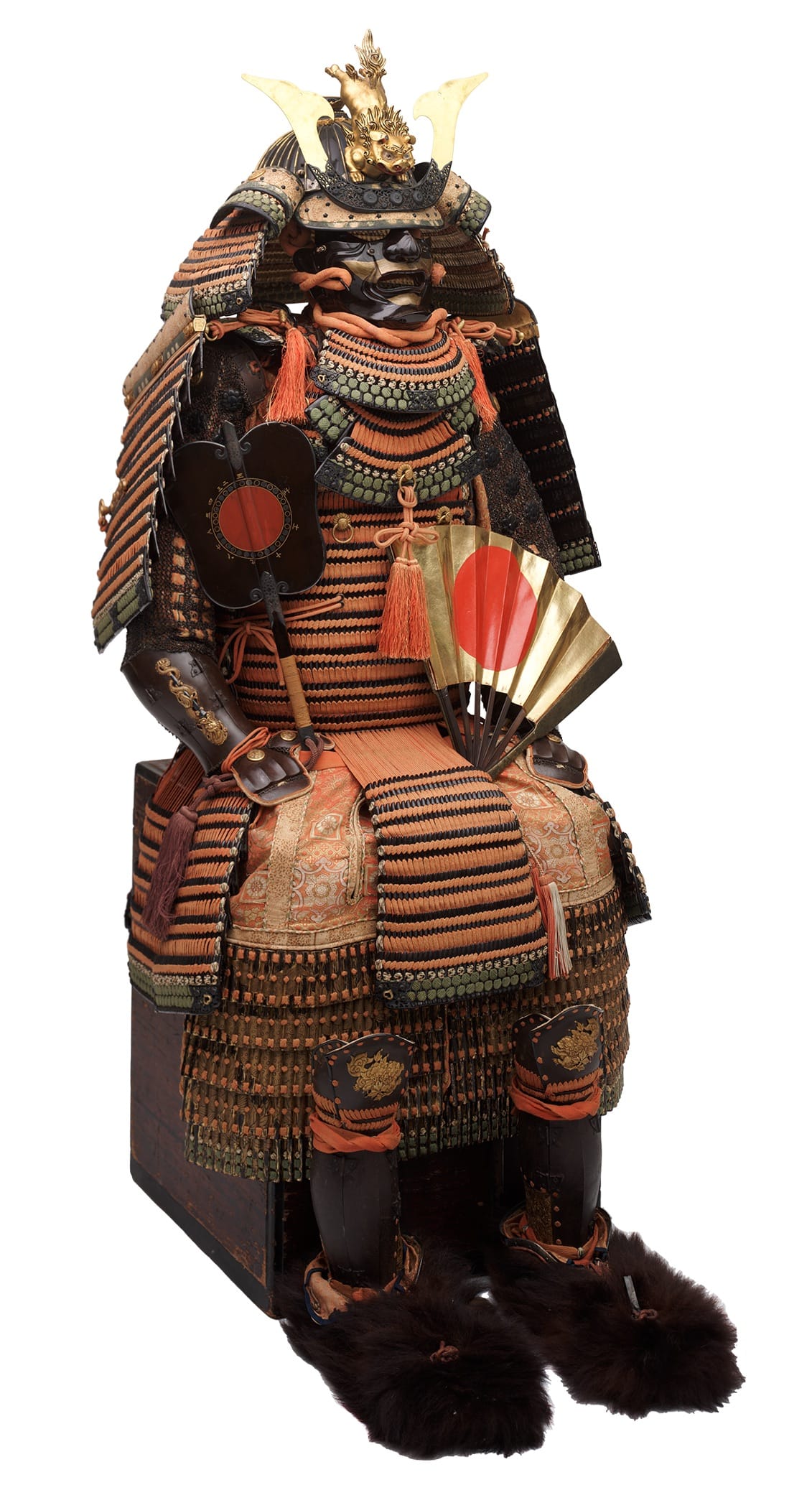
Omote Dogu
This chapter of the samurai story is one that craftsmen in 12th-century Japan certainly couldn’t have expected. How could they have anticipated the voracious fascination residents of the Western Hemisphere would have with their artifacts, culture and customs? Swiss-born developer and owner/collector of the Dallas museum named for him and his wife, Gabriel Barbier-Mueller is no exception to this fascination.
Barbier-Mueller acquired his first piece of samurai armor around 30 years ago in Paris, according to coverage by the Associated Press. That initial acquisition expanded into one of the world’s largest privately held collections of omote dogu — the military equipment of the samurai, like armor and weapons.
By 2012, the family’s collection was extensive enough to support a museum. The approximately 400-piece collection at the Ann & Gabriel Barbier-Mueller Museum in Dallas’ Hardwood District is continuously updated with new exhibits and pieces. Just last year, the Minister for Foreign Affairs of Japan recognized Gabriel Barbier-Mueller for “fostering mutual understanding between Japan and the United States.”
But before the collection had its permanent public home in Dallas and was recognized for diplomatic contributions to cross-cultural understanding, word was spreading through the international art community about the extensiveness of Barbier-Mueller’s privately held collection of samurai armor. According to a 2014 interview by the Kimbell Art Museum in Fort Worth, the first request to publicly exhibit pieces from the collection was by the museum director of the musée du quai Branly–Jacques Chirac in Paris.
After a successful exhibition in late 2011, it didn’t take long for more institutions to get in the queue to host. Now in its 14th year, it will reside at the Philbrook for five months before it’s packed up and shipped off to its next home.
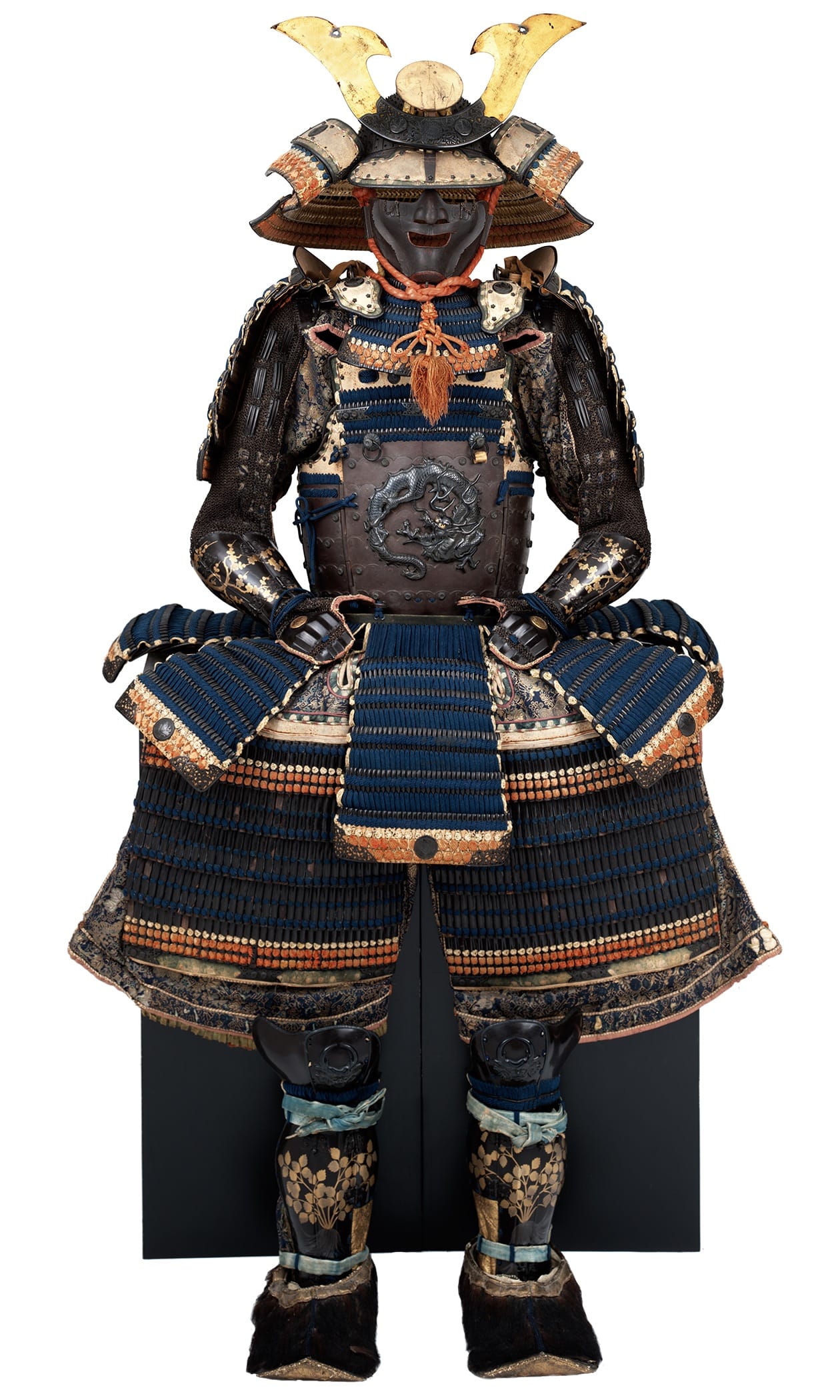
Warrior Culture
Barnoski noted what draws them personally to the SAMURAI exhibit as its curator might resonate with other visitors, too.
“It’s interesting to me to be from Oklahoma, to be Cherokee and Muskogee (Creek), and find the intersections between these disparate cultures — the warrior culture of samurai versus the warrior culture of the Plains and Prairie people here,” says Barnoski, who is also the Assistant Curator for Native Art at the Philbrook.
Barnoski believes there are similarities between the ceremonial aspects of many Native tribes and the samurai, especially surrounding regalia, what warriors wear, and the power those objects hold.
“For many Native people, what you’re wearing is embedded with the prayers of your ancestors, the prayers that people are making for you so you have good intentions on your life; you’re safe as you move forward. And that’s no different than some of these objects [and] with these masters of their craft who are creating these armors.”
In the 5,000 square feet of active gallery space at Philbrook’s SAMURAI exhibit, viewers are offered an intimate and up-close look at objects like kabuto (helmets), mengu (face armor) which includes menpō (masks), yoroi (armor), uma-yoroi (horse armor) and naginata (pole weapons), among many other ceremonial adornments, artifacts and textiles. These masterworks exemplify the ornate artisanship that created the regalia and cultural mythos of the samurai.
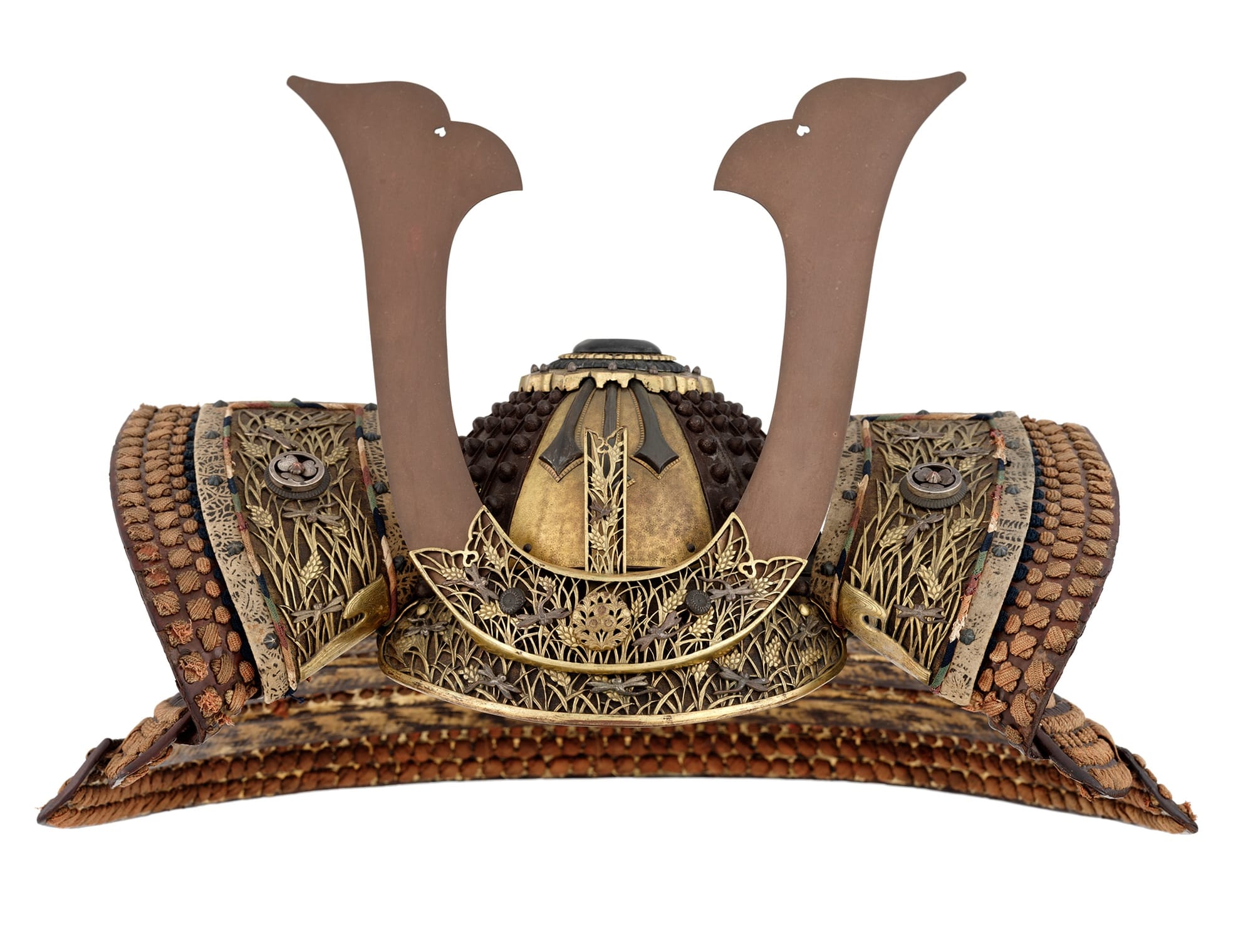
Established in the late 12th century, samurai acted as personal retainers or vassals to landowning elites. In this capacity, they acted as stewards and guards to nobles ruling Japan. By the Edo period — the last era in which samurai remained a distinct social class before their abolition due to widespread government and military modernization — peace ruled Japan. The samurai largely held ceremonial and social roles as bureaucrats and officials, as mandated by the ruling government.
The exhibition is organized by theme but has pieces ranging from the Heian period (794-1185) to the Edo period (1603-1868). There are even pieces of armor from the Meiji period (1868-1912), around the time when the samurai were formally abolished.
“As the United States of America, we have a really short understanding of time in a lot of ways. We’ve not been a country for not that long, and these objects come from a space with a really long, storied history — a long recorded history,” says Barnoski. “So you’re looking at objects from 972 A.D. up to the mid-20th century and getting to see how these things have evolved over time and how they’re still influencing our contemporary culture.”

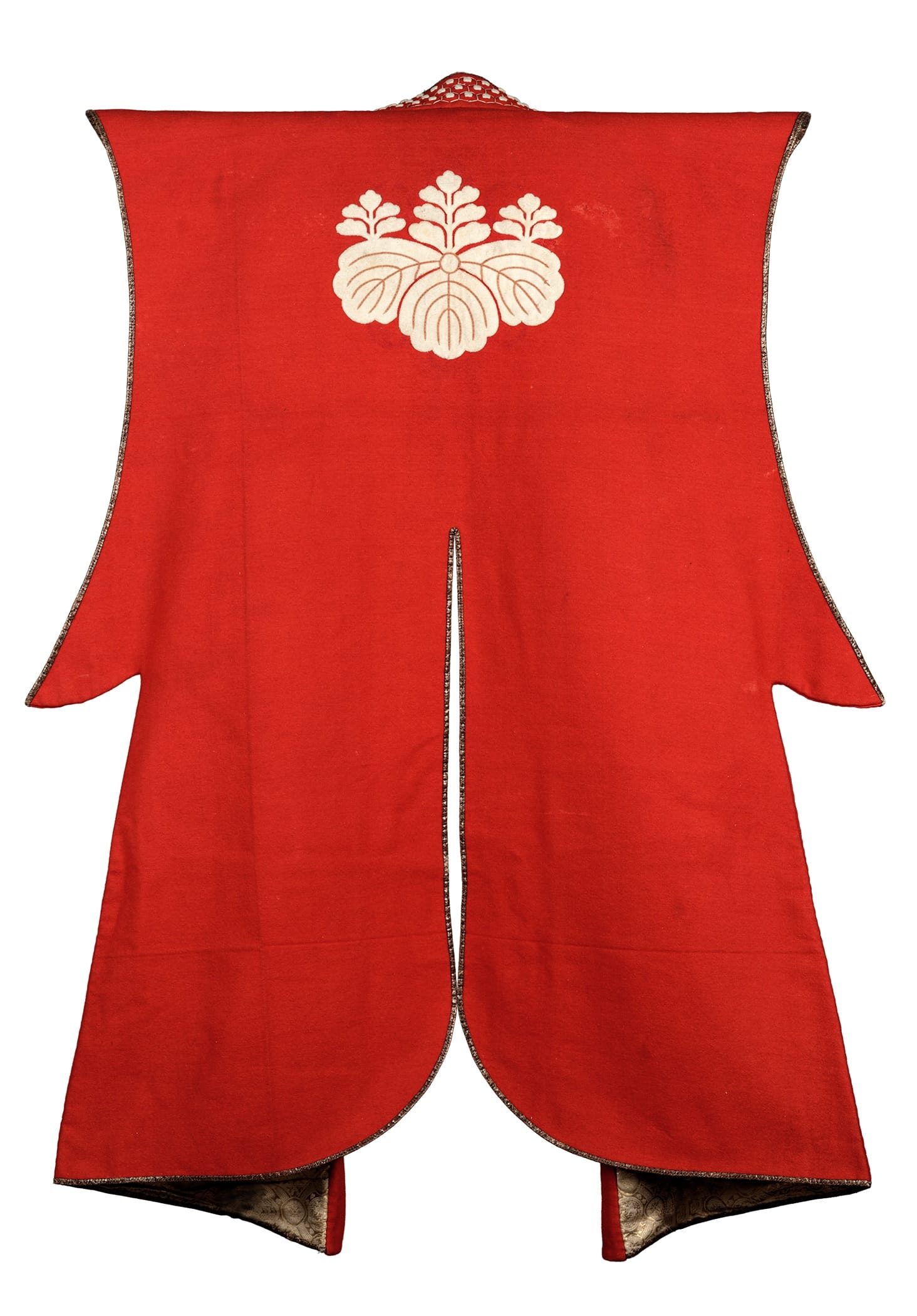
LEFT: Artist once known. Elaborate shell-shaped helmet (Ōitaragainari kawari kabuto), 17th century (early Edo period). Iron, lacing, and paper-mâché, 24 × 19 × 10”. © The Ann & Gabriel Barbier-Mueller Museum, Dallas. Photo: Brad Flowers -- RIGHT: Artist once known. Surcoat (Jinbaori), 18th century (mid-Edo period). Wool, silk, and brocade, 44 × 26 1/2 × 1”. © The Ann & Gabriel Barbier-Mueller Museum, Dallas. Photo: Brad Flowers
The Art of War
Nowhere is that influence more evident than in the work of modern metalsmiths and craftspeople. The Japanese metal technique uchidashi is alive and well in master metal sculptors like Douglas Pryor, who has been honing his craft for the past 20 years. Considering all the armor and metal art he’s seen over his career, he has advice for first-time viewers of SAMURAI.
“When you’re walking through an exhibit like that, understand how radically diverse the things you’re looking at are,” says Pryor. “You’re looking at so many different specialties. The thing about Japanese armor is it mixes so many techniques, from really intricate silk work to the types of things that we’re talking about right now with uchidashi to lacquer work, which is just exceptional.”
This concept is epitomized in Pryor’s favorite piece in the exhibit: Kote (sleeves) with Design of Silver Clouds, created in the 1790s from the artist school of Myōchin Munesada.
“They’re probably one of my favorite things in the exhibit, but also because I stumbled upon these online as a younger person. There’s no real parallel that I’ve seen available to English speakers that you can just kind of walk up in the States and check out,” says Pryor. He explained that the piece stands out due to the mixture of multiple techniques and the fact that many of the elements of the design wouldn’t be easily viewable.“Now, this is just the arm sleeve, right? The actual shoulder guard would go over top of that; most of this would be hidden from view,” says Pryor. “So I kind of love that this amount of sculpture is kind of for the wearer or for the passing glimpse, not even necessarily to be put in the spotlight.”
Ultimately, Pryor is grateful for the privilege of seeing “an exhibit this diverse outside of Japan.”
As he says, “You get to move back and forth between falling in love with the people and the stories and the places that they come from, without necessarily having to go through the effort of learning that language or traveling to those places, which is a wild privilege.”
Understanding Uchidashi
Many kabuto (helmets), menpo (masks), mengu (face armor) and other facets of yoroi (armor) are crafted using the Japanese metal smithing technique uchidashi. While uchidashi is similar to the technique of repoussé, what separates the two is a specific approach to the metal. Repoussé (French for “pushed up”) is sculpting the piece by hammering the design on the reverse side, a notable example of which is the Statue of Liberty.
In contrast, Pryor explained that uchidashi begins with hammering metal to make positive space like a mound. Then, that positive space is backfilled with pitch, and the sculptor works from the front with tools to create the desired design. This preserves the materials’ thickness and allows the sculptor to treat their metal and chasing tools like a pen and paper.
“You get to just essentially turn relief work into drawing and painting. So that opens up such a huge world of illustrative and sculptural practice that integrates into sheet metals,” says Pryor.
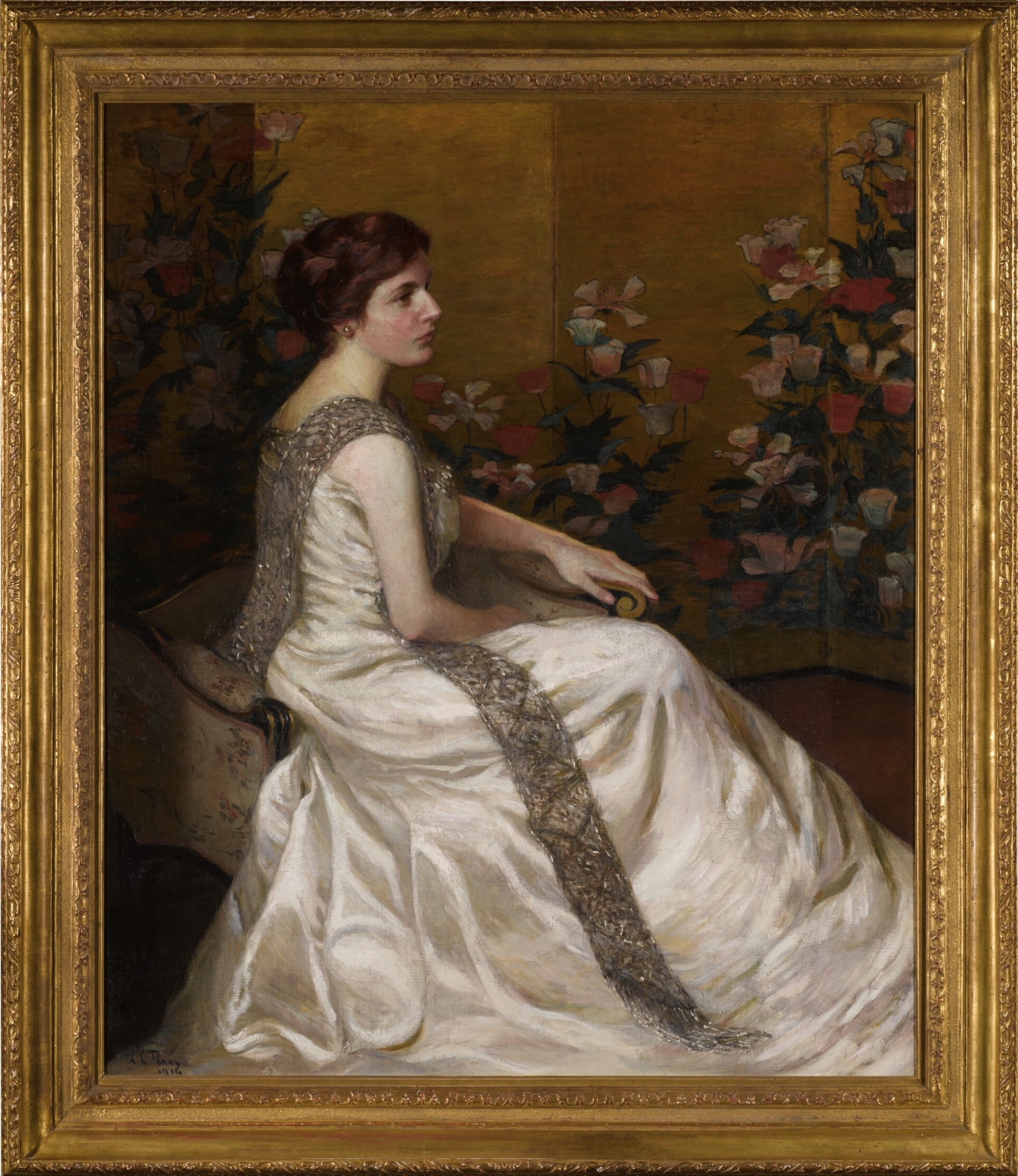
Japonisme
Throughout the exhibit’s run, the museum will offer a robust educational and community program that provides conversation around the samurai and Japanese culture overall.
Community events such as curator-guided tours, the art of bonsai, paper lantern creation and samurai-related children’s storytimes are just some of the offerings from the Philbrook, with more added throughout the exhibit’s run. Enthusiastic SAMURAI fans can also pick up the exhibit’s catalogue from the gift shop so they can remember their favorites. Plus, to add context to SAMURAI, Philbrook also exhibits Japonisme: New Perspectives from the Land of the Rising Sun in the former American Galleries until Aug. 3. Japonisme, a French term for the popularity and influence of Japanese culture in the West after Japan opened its borders for trade, is an exhibit largely sourced from Philbrook’s collection to run in tandem with SAMURAI.
“So beyond just the Helmerich Gallery, the upstairs galleries will be activated as well,” says Barnoski. “It’s taking all the work from our collection, including some historic screening and paintings, and evaluating the impact of Japanese culture on a history of art.”
A standout piece in Japonisme is Lilla Cabot Perry’s “The Gold Screen” from 1912, which the museum acquired in 2022. Perry was a preeminent Impressionist painter who was influenced by Japan, continuing an artistic conversation between both cultures.
Thanks to the Philbrook and Ann and Gabriel Barbier-Mueller Museum, that global conversation about the samurai and Japanese culture is continued to this day, allowing audiences to understand not just these master works but also the real humans who once wore them.
“I think there’s also something really important about the idea of honor and justice and beauty and care, that’s so embedded in this culture and in the samurai armor,” says Barnoski. “So I feel like they’re beyond fascination — there’s respect there.”
SAMURAI: Armor from the Collection of Ann and Gabriel Barbier-Mueller is currently open at the Philbrook until Aug. 3. To get tickets or more information about the exhibit, visit philbrook.org or follow the museum on social media at @philbrookmuseum.

